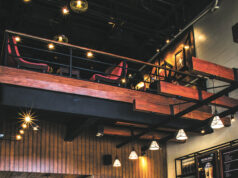Today, June 24, marks the 448th founding anniversary of the City of Manila. Early this month, Malacañang declared this day a special non-working holiday in the capital, giving residents and others a chance to celebrate and reflect on the city’s long and colorful history.
Almost four centuries and a half ago, a Spanish explorer by the name of Miguel López de Legazpi, the first governor-general of the Philippines, and his troops came to Manila after founding a Spanish settlement in Cebu. Legazpi was ordered by Luis de Velasco, the second viceroy of New Spain, to claim the country after it was discovered by Ferdinand Magellan roughly half a century earlier. Legazpi found a Muslim community in Manila and had it destroyed and replaced it with Intramuros, a walled city.
“Manila became the capital of the new colony. Outside the city walls stood some scattered villages, each ruled by a local chieftain and each centered on a marketplace. As Spanish colonial rule became established, churches were built near the marketplaces, where the concentration of population was greatest. Manila spread beyond its walls, expanding north, east, and south, linking together the market–church complexes as it did so,” Encyclopedia Britannica says.
More than three centuries later, a war between Spain and the United States took place, and the Philippines fell into the hands of the latter. According to Britannica, the period during which the city was under the rule of the United States (US) was “one of general social and economic improvement.”
“US policy encouraged gradual Filipino political autonomy, and to help achieve this goal, public schools were established in Manila and throughout the archipelago. The University of the Philippines, founded in 1908, became the apex of the educational system. The city developed into a major trading and tourist center,” it explains.
Things changed for the worse when the Second World War broke out. Manila was declared an open city by General Douglas McArthur so as to stop it from getting destroyed by the Japanese forces that had started invading the country in the early. Britannica notes that the city suffered only “little damage” during the Japanese invasion. (Japanese occupation lasted a few years, from 1942 to 1945). “[B]ut [it] was leveled to the ground during the fight for its recapture by US forces in 1945,” it says.
In 1946, Manila, as Britannica describes it, was “in shambles” when it became the country’s capital. However, it managed to get back on its feet with help from the United States. Despite this, in 1948, Quezon City was declared the new capital. It held that title for almost three decades. But in 1976, following a presidential decree, Manila was once again officially recognized as the country’s capital.
Now, Manila is a sprawling metropolis. According to the Philippine Statistics Authority, it had a population of 1.78 million in 2015. It was the second most populous city in the National Capital Region after Quezon City, which had 2.94 million people.
It is also a major economic center, home to a multitude of commercial establishments. It is the headquarters of a number of big businesses, including major publishing companies.
Intramuros and Binondo are two of the city’s most historically and economically important districts. The former is the location of some of the most historic structures in the country, such as Fort Bonifacio, San Agustin Church and Manila Cathedral. Tourism is a major industry in the district. In addition, Intramuros is where several well-known colleges and universities are found, like Mapúa University, Colegio de San Juan de Letran, and Pamantasan ng Lungsod ng Maynila. The latter district is the oldest Chinatown in the world, where businesses by largely Filipino-Chinese entrepreneurs abound. Among its famous attractions are San Lorenzo Church and Escolta Street.
Port of Manila, located in the northwestern portion of the city, is the largest seaport not only in Luzon but in the entire Philippines. In the 2018 ranking of the world’s largest container ports compiled by Lloyd’s List, a British journal, it placed 30th, having a throughput of 4,782,240 teu (20-foot equivalent unit) in 2017, up 5.7% from 2016. Lloyd’s List said of the port, “An aggressive infrastructure push helped growth at the most important international gateway in the country.”
According to the Cities and Municipalities Competitive Index 2018, the City of Manila was the second most competitive local government unit (LGU) in the country after Quezon City. The competitiveness of an LGU was evaluated in terms of four “development pillars,” namely economic dynamism, government efficiency, infrastructure and resilience.



